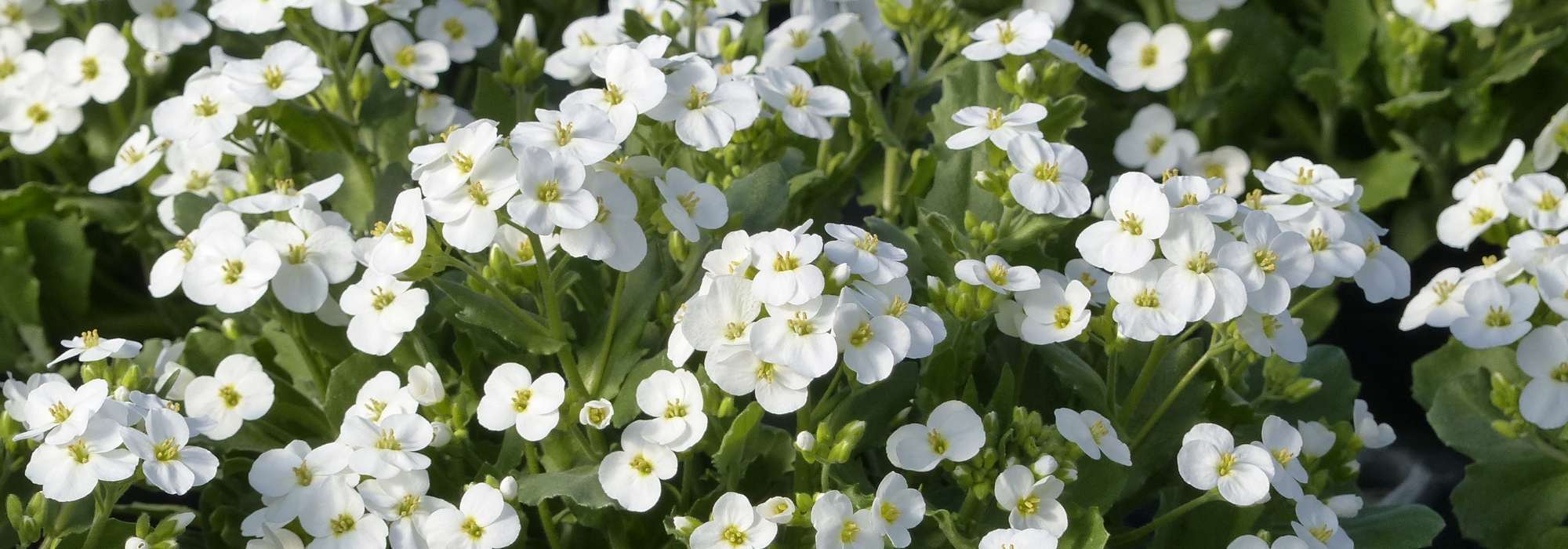
Arabis, Caucasian rockcress: planting and care
Contents
Arabis in a nutshell
- Arabis is a perennial groundcover forming dense tapetum, indispensable in dry gardens where no watering is required
- Its silver or variegated evergreen foliage acts as a cushion for delicate white or pink spring flowering
- Easy and tolerant, it grows in very sunny positions and prefers dry, well-draining soils
- Hardy and drought-tolerant, low-maintenance plant
- Ideal in rockeries, as bed edging, along paths or to top a low wall, easy to use
A word from our expert
Arabis or rockcress, more commonly called Corbeille d’argent, is a vigorous perennial that forms a spreading groundcover and is particularly decorative with its evergreen, green or grey‑white, downy foliage and its white or pink spring flowering.
From the pink Arabis, Arabis caucasica ‘rosea’, to the less hardy Arabis blepharophylla, via the white Arabis ‘Snowcap’ and the brand‑new hybrid Arabis alpina, all these corbeilles d’argent are trouble‑free plants, really easy to grow.
A rock‑garden plant par excellence, Arabis likes sunny spots and well‑drained soils, but adapts to many situations.
Hardy and versatile, it will thrive at the edge of flowerbeds, along a path or on top of a low wall.
Discover our collection of rockcresses, this remarkable mat‑forming plant that flowers abundantly and delights gardeners everywhere!
Description and botany
Botanical data
- Latin name Arabis
- Family Brassicaceae
- Common name Arabis, Rock cress
- Flowering March to June
- Height 0 to 0.30 m
- Exposure Sun, Part shade
- Soil type All, well-drained
- Hardiness -10°C to -25°C depending on variety
Arabis, also known as Arabis or Rock cress, is a perennial plant belonging to family Brassicaceae, the crucifers like cabbages.
The genus Arabis comprises nearly 120 species, mainly evergreen perennials native to mountainous regions and rocky slopes of Europe, notably the Caucasus, Asia and North America. They occur naturally in stony soils as well as in sands of the Arabian deserts.
The most widely cultivated species is Arabis caucasica, the Caucasian Arabis or rock cress. It is available in numerous cultivars. Arabis blepharophylla is also encountered fairly often — a less hardy species to reserve for mild climates — and Arabis ferdinandi-coburgii, lower in habit, makes an excellent groundcover.
With a spreading or upright habit, Arabis readily spreads by rootstock to form cushions of persistent rosettes. Its creeping shoots root on contact with soil while branching theoretically without limit; its character is nevertheless not invasive.
With growth rate varying from rather slow to fast depending on species, it forms a dense groundcover not exceeding 30 cm in height, with a minimum spread of 20 cm.
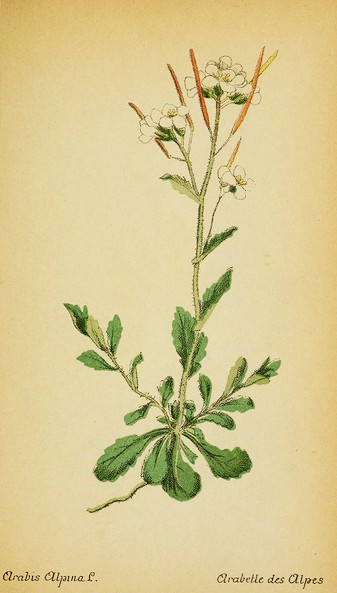
Arabis alpina – botanical illustration
From a dense or looser rosette emerge simple leaves, dentate or entire, elliptical to ovate, lanceolate and recurved depending on species. Measuring 1 to 5 cm long, they are sometimes glossy and leathery or, on the contrary, covered with a velvety down that reddens in cold. They form a thick tapetum of grey-green, glossy green, dark green or grey-green marginate with cream-white. Some Caucasian Arabis display a pale grey foliage that has earned it the nickname “silver basket”.
Arabis has a light, generous and conspicuous flowering in spring. From these densely leafy cushions, a multitude of small fresh-coloured flowers emerge from April to June, sometimes earlier if temperatures are mild. Each rosette produces a flowering stem bearing at its tip loose clusters of flowers 3 to 8 cm long held above the foliage.
Flowers about 1 to 2 cm in diameter, grouped in compact spikes, are made up of four rounded petals arranged in a cross. Flowers are single, sometimes fully double and generally pure white or pale pink to purplish, centred on a pale yellow heart: they combine simplicity with floribundity.
Slightly scented in some cases, they attract bees and butterflies for over a month throughout spring.
Arabis is truly an easy-to-grow, tolerant perennial. Most often very hardy (from -15°C to -25°C), it can be cultivated in all regions.
Although it shows a clear preference for dry soils, even poor, rocky or gravelly, it will accept richer, humus-bearing soil. Arabis thrives in sun and never fears drought. It does, however, dislike soils that are too compact and too wet.
With its simple flowers, Arabis brings a rustic touch to all natural gardens.

Some Arabis flowers: A. caucasica ‘Pinkie’, A. caucasica ‘Snowcap’, A. alpina subsp. caucasica ‘Roselite’ and A. caucasica ‘Plena’
Main species and varieties
Most cultivated species is Arabis caucasica, better known as Caucasian rockcress or silver basket. It is available in many cultivars with single or double flowers, white or pink. Arabis blepharophylla is a moderately hardy species, best suited to mild climates of southern France. Arabis fernandi-coburgii, with lower habit, constitutes an excellent groundcover.
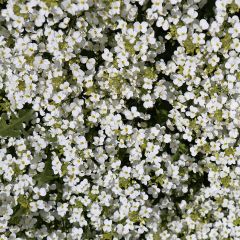
Arabis alpina subsp. caucasica Snowcap
- Flowering time May to July
- Height at maturity 15 cm
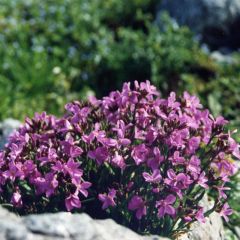
Arabis blepharophylla
- Flowering time May to July
- Height at maturity 15 cm
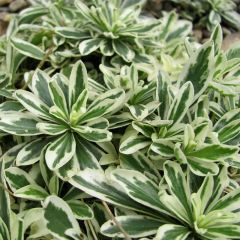
Arabis ferdinandi coburgii Variegata
- Flowering time June, July
- Height at maturity 10 cm
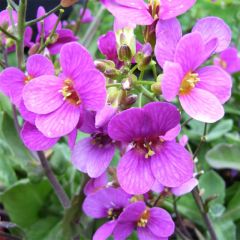
Arabis alpina subsp. caucasica Pinkie
- Flowering time May to July
- Height at maturity 15 cm
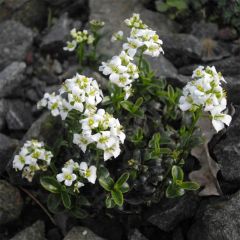
Arabis x suendermannii
- Flowering time May to November
- Height at maturity 10 cm
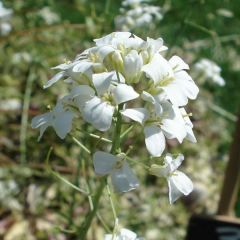
Arabis ferdinandi coburgii Old Gold
- Flowering time June, July
- Height at maturity 15 cm
Discover other Arabis
View all →Available in 0 sizes
Available in 2 sizes
Available in 1 sizes
Available in 1 sizes
Available in 1 sizes
Available in 1 sizes
Available in 1 sizes
Available in 1 sizes
Available in 1 sizes
Available in 1 sizes
Planting
Where to plant Arabis or rock cress
Arabis is very resistant to cold and drought: most species are hardy down to −20°C. It can therefore be grown throughout France.
A rock-garden plant par excellence, rock cress likes sun and free-draining soils.
Although it prefers fairly undemanding growing conditions – a dry, stony, well-drained soil – it will adapt to richer, fresher, humus-bearing soil, but will tend to spread more and lose compactness. It also does very well in sandy soils of seaside gardens.
It only dislikes soils that are too compact and too wet in winter.
It is easy to grow in full sun but will tolerate partial shade: foliage will develop there at expense of flowering.
Arabis is an excellent groundcover, capable of quickly occupying a large area! Its tendency to prevent weed emergence makes it an excellent alternative to lawn on dry ground. Being naturally groundcovering, it needs space and can tend to smother more delicate neighbouring plants.
The silver rock cress always brings a lightness to compositions it inhabits.
While Arabis is the quintessential plant for naturalistic rock gardens (it is less suited to formal rock gardens), it also makes an excellent groundcover for casually carpeting base of bushes or hedges, edging a border or path, spreading freely through paving, cascading over a wall or dry bank or flowering in a pot or window box.
When to plant Arabis or silver rock cress
Arabis are preferably planted in spring, from March to May in cold regions once frost risk has passed, or from September to November in south of France.
How to plant Arabis or silver rock cress
In open ground
The Arabis or rock cresses are perennials that benefit from being planted at density of 7 to 9 plants per m2, spaced about 30 cm apart to allow stems to spread freely and to cover soil effectively. In heavy soils, add a good amount of coarse sand or gravel to improve drainage: it grows very well in sand!
- Work soil well
- Dig a hole 2 to 3 times wider than pot depth
- Spread gravel at bottom of hole
- Plant without burying collar, covering it with 3 cm of soil
- Firm slightly
- Water generously at planting
Planting Arabis or silver rock cress in a pot
Plant alone or in combination, but rock cress may invade or even smother other plants. Choose a container wider than it is deep.
- Spread a good drainage layer (gravel or clay balls) at pot base
- Plant in a mix of garden soil and leaf mould-based compost with equal part fine sand
- Water regularly
Maintenance, pruning and care of Arabis
Rock cress is a very undemanding perennial that tolerates drought; it hardly requires any watering. In the first spring, give regular watering but avoid waterlogging. Once well rooted, it will no longer need any water.
In a pot, soil dries out faster than in the ground; water generously during growth, allowing the substrate to dry out well between waterings. Water sparingly in winter.
Each autumn, optionally add a little compost to keep the plant vigorous.
In winter, protect less hardy species (Arabis blepharophylla) from cold with a mulch of dried leaves or straw.
Remove faded flowers as they appear.
Pruning is not necessary. After flowering, simply cut clumps back by half to maintain a compact habit.
Potential diseases and pests
Arabis is not very prone to disease. White rust can attack foliage. Avoid wetting foliage when watering. Cut and destroy diseased leaves, then treat with sprays of nettle manure or horsetail.
Shoots can be attacked by the Arabis gall midge, or cabbage midge, which causes galls deforming flower stems that should be cut off and burned. Apply sprays of natural pyrethrum.
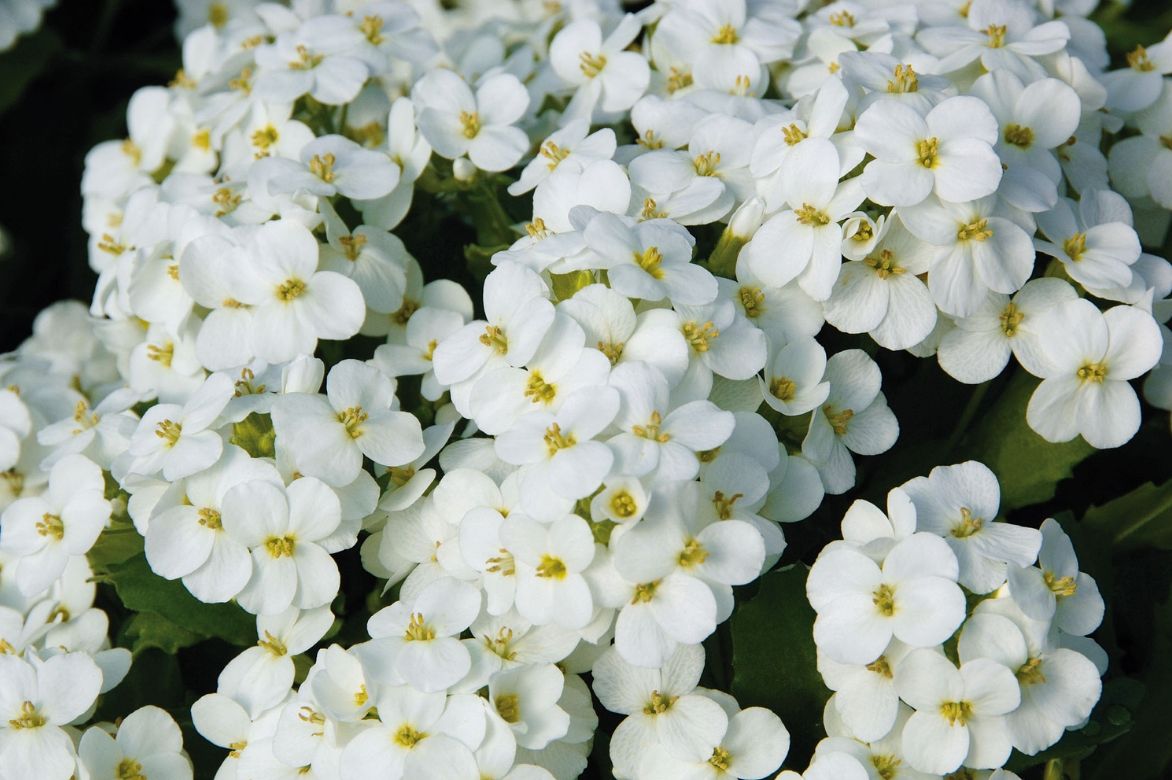
Arabis caucasica ‘Alabaster’
Multiplication
Although sowing Arabis is possible in autumn under a cold frame, propagation by cuttings and division remain the simplest and quickest methods.
When and how to take herbaceous cuttings of Arabis
- Take tips of lateral shoots in June
- Remove lower leaves
- Plant them in pots in a light mixture of turf and sand
- Place cuttings in shade
- Water cuttings regularly
- Overwinter them frost-free under a cold frame
- Pot on into a larger pot when new shoots appear
- Pot on in autumn or the following spring
Division
Clump division is the easiest way to multiply Arabis. It is carried out in autumn, after flowering.
- Using a fork or spade, lift the clump and remove young rosettes with roots from the clump’s periphery
- Plant them immediately and water until established
Associate
With its evergreen foliage and flowers in fresh tones, the Arabis is indispensable in dry gardens, in mineral landscapes and in naturalistic holiday gardens along seaside, alpine or Mediterranean coasts where it forms superb year-round, low-maintenance cushions.
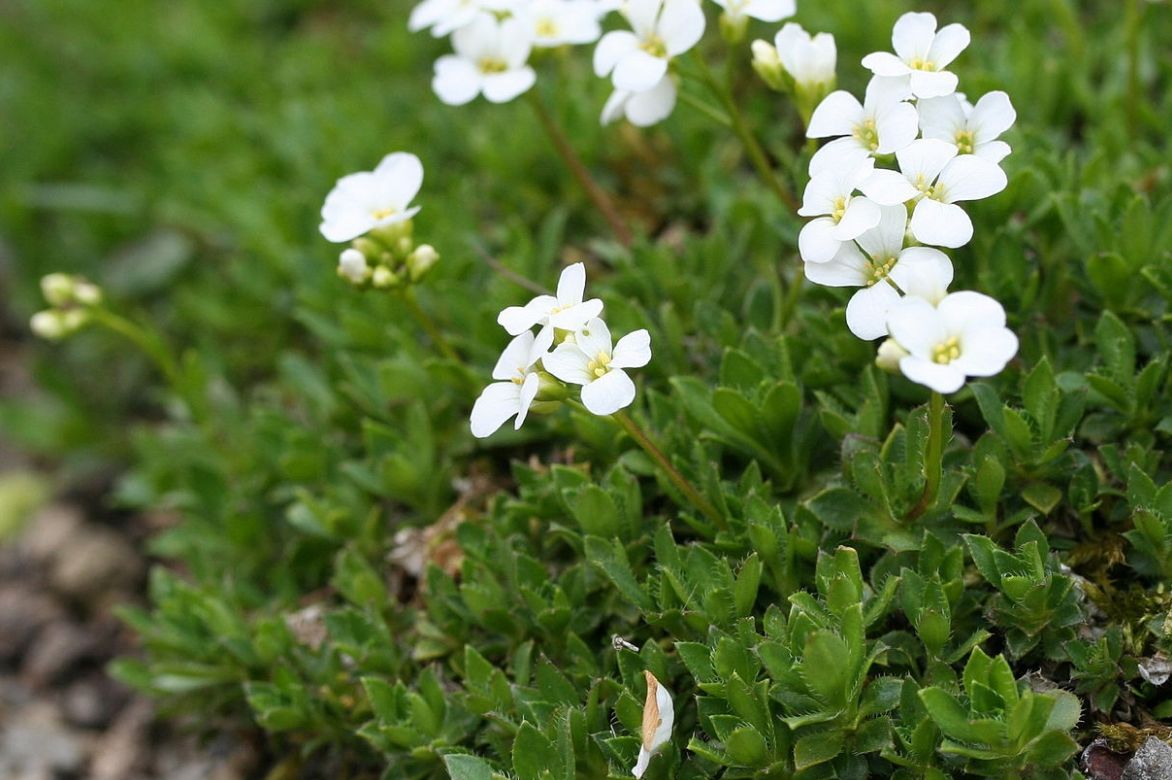
Arabis scopoliana on rockery (photo Michael Wolf)
Thanks to its light habit, it complements spring scenes with great charm, adding volume and light, notably in white/silver or white/pink schemes. It is easy to combine with biennials, early bulbs and other early perennials.
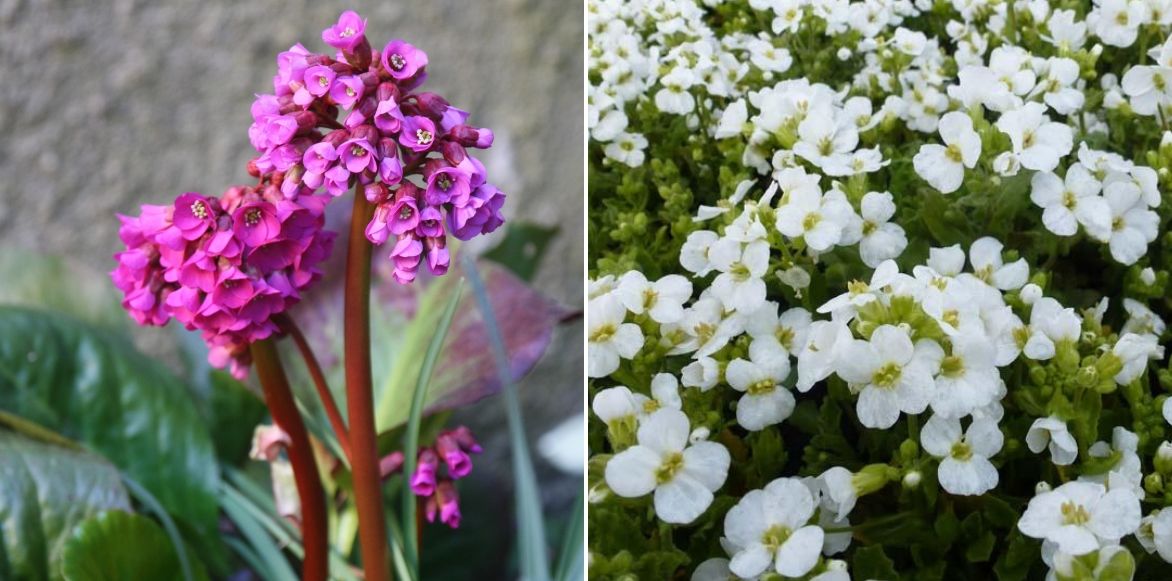
An idea for a wall-top planting: Bergenia purpurascens and Arabis caucasica ‘Snowcap’
It will green rockeries alongside Alyssums, aubrietas and campanulas.
In beds or borders, its versatile size allows it to be slipped between spring-flowering bulbs such as Muscari, daffodils, tulips, scillas…
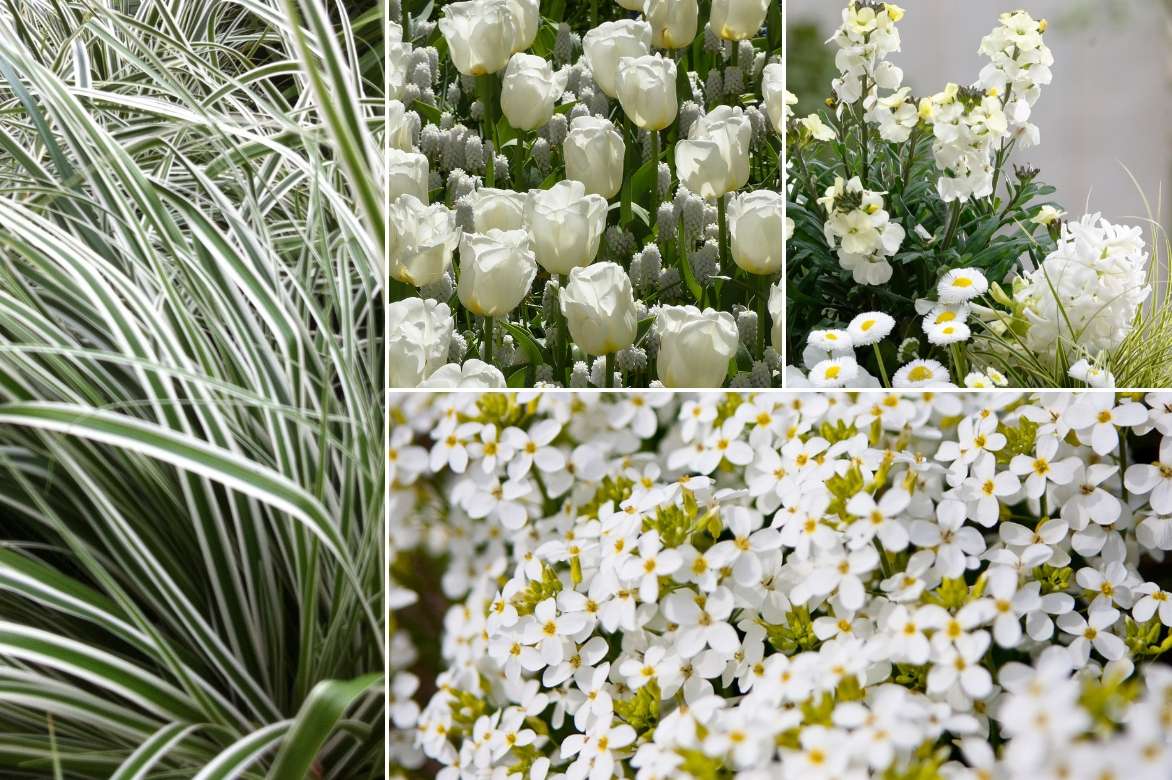
An idea for a border planting: Carex oshimensis ‘Everest’, Tulip ‘Calgary’, white common daisy, white Erysimum, Hyacinth ‘Madame Sophie’ and Arabis caucasica such as ‘Snowcap’ (photo Jan Sølve Borlaug)
To combine with other rockery perennials such as small sedums, Iberis, moss phlox or aubrietas, or as a groundcover among bulbous plants.
In pots or window boxes it will accompany daisies, forget-me-nots and early tulips.
Useful resources
- Have you thought of Arabis as an alternative to short grass meadow?
- Arabis likes dry soils, discover which plants to pair it with and our tips on dry gardening
- Silver baskets are indispensable in naturalistic gardens
- Subscribe!
- Contents
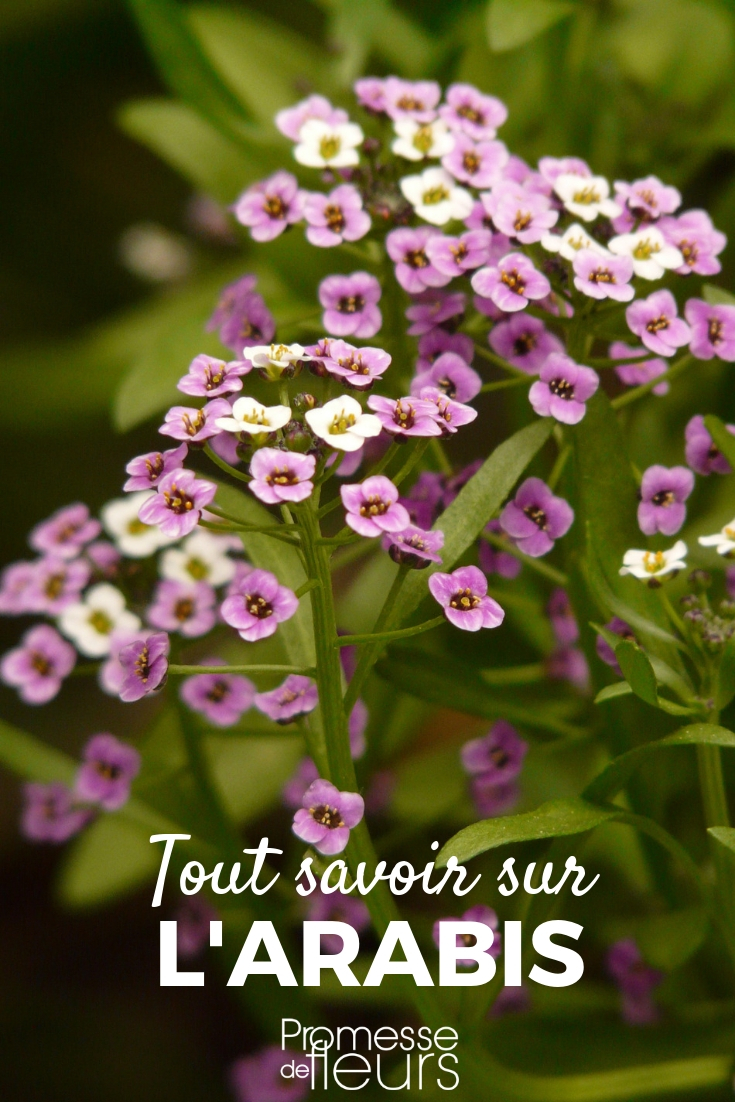
































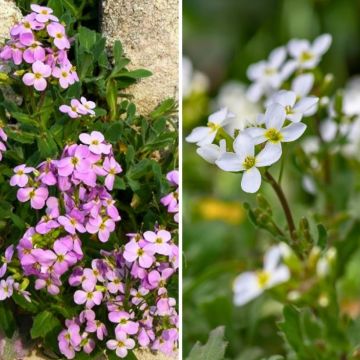
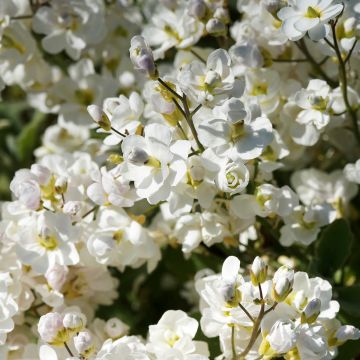
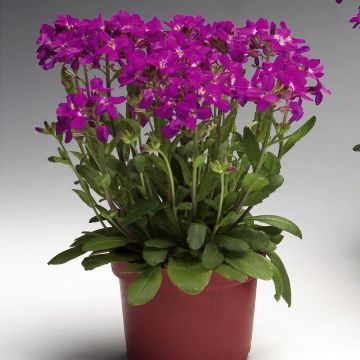
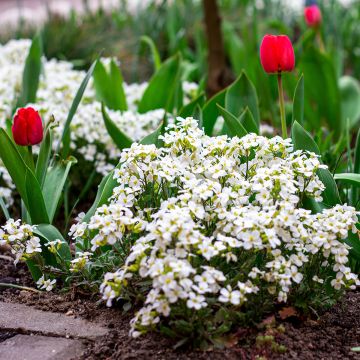
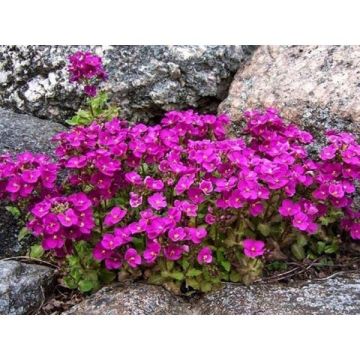
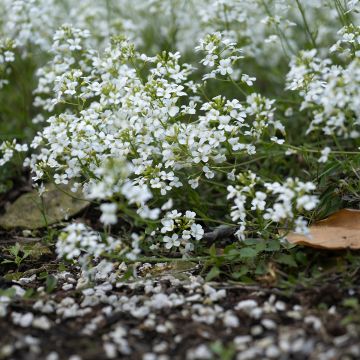
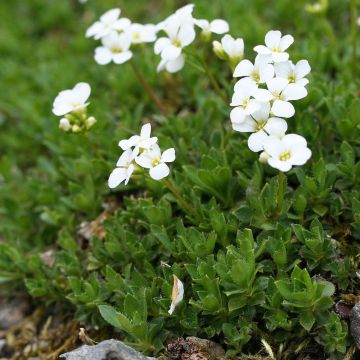
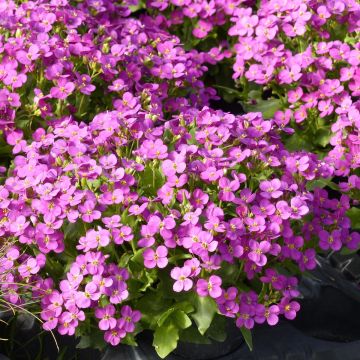



Comments